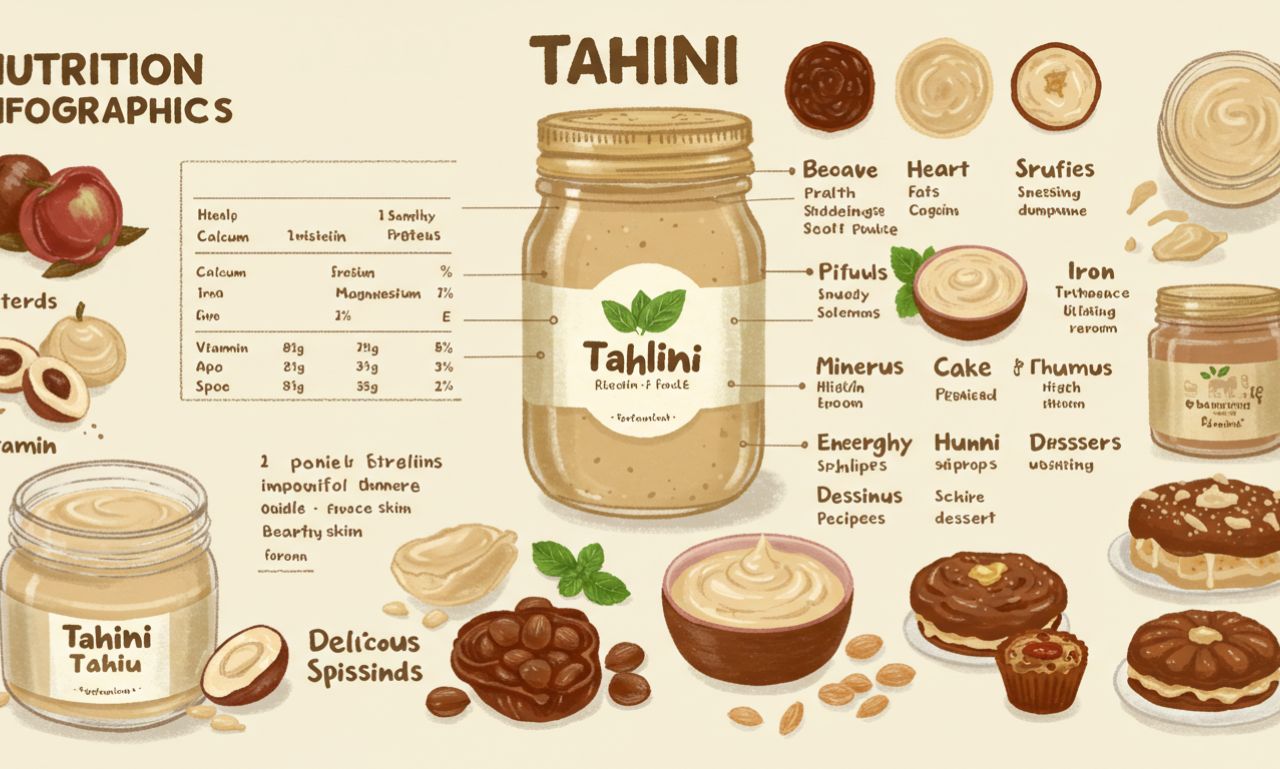
Tahhiini is a smooth, creamy paste made from roasted and ground sesame seeds. Known for its nutty flavor and versatility, tahhiini is widely used in Middle Eastern, Mediterranean, and increasingly global cuisines. Unlike peanut butter or almond spread, tahhiini offers a unique earthy taste that blends well in both savory and sweet dishes.
This staple ingredient is the foundation of iconic dishes like hummus and baba ghanoush, yet its uses extend far beyond traditional recipes. From salad dressings to desserts, tahhiini has become a popular addition to modern kitchens worldwide.
The Origins of Tahhiini
Tahhiini has ancient roots, dating back thousands of years to regions around the Mediterranean and Middle East. Sesame seeds were among the first oil-rich seeds cultivated by humans, prized for their nutritional value and long shelf life. Historical texts suggest tahhiini was used in both culinary and medicinal traditions, making it a food with cultural as well as nutritional significance.
Nutritional Profile of Tahhiini
Tahhiini is a nutrient-dense food packed with essential vitamins and minerals. A typical serving provides:
-
Healthy fats – Mainly unsaturated, supporting heart health.
-
Plant-based protein – Important for vegetarians and vegans.
-
Calcium and phosphorus – Strengthen bones.
-
Iron and magnesium – Boost energy and muscle function.
-
Vitamin B complex – Supports metabolism and brain function.
Health Benefits of Tahhiini
Incorporating tahhiini into your diet offers several health advantages:
-
Heart health: Rich in unsaturated fats that lower cholesterol.
-
Bone strength: High calcium content supports skeletal health.
-
Digestive wellness: Fiber aids in smooth digestion.
-
Anti-inflammatory effects: Natural compounds reduce inflammation.
-
Energy boost: Healthy fats and protein provide long-lasting energy.
Tahhiini in Traditional Dishes
Classic dishes that rely heavily on tahhiini include:
-
Hummus – Blended with chickpeas, lemon, and garlic.
-
Baba ghanoush – Eggplant dip enriched with tahhiini.
-
Halva – A sweet confection made with sugar and tahhiini.
These recipes highlight how tahhiini enhances both savory and sweet flavors.
Modern Uses of Tahhiini
Beyond tradition, tahh-iini has entered modern kitchens in new ways:
-
Used as a salad dressing base when mixed with lemon juice and herbs.
-
Added to smoothies for extra creaminess and nutrition.
-
Incorporated into baked goods like cookies and brownies.
-
Drizzled over roasted vegetables for a nutty finish.
How to Choose the Best Tahhiini
When shopping, consider:
-
Ingredients – Look for pure ground sesame seeds without additives.
-
Texture – Smooth consistency indicates high quality.
-
Origin – Middle Eastern brands often offer authentic flavor.
-
Storage – Natural tahh-iini may separate, requiring stirring before use.
Making Tahh-iini at Home
Homemade tahh-iini is simple and cost-effective:
-
Toast sesame seeds until golden.
-
Blend seeds with a little oil until smooth.
-
Store in a glass jar at room temperature or in the fridge.
This allows control over flavor and freshness.
Tahh-iini and Vegan Diets
Tahh-iini is a plant-based powerhouse, offering vital nutrients often lacking in vegan diets. Its protein and calcium content make it an excellent substitute for dairy-based spreads and sauces.
Tahhiini in Global Cuisines
While most famous in Middle Eastern cooking, tahh-iini has traveled worldwide:
-
In Asia, it appears in noodle sauces.
-
In Europe, chefs use it in gourmet desserts.
-
In America, it has become a popular health food trend.
Sustainability of Sesame Seeds for Tahhiini
Sesame plants require relatively little water compared to other oilseed crops, making tahh-iini a more sustainable choice for eco-conscious eaters. Additionally, sesame farming supports small agricultural communities globally.
Tahh-iini for Weight Management
Although calorie-dense, tahh-iini can aid in weight management when eaten moderately. Its healthy fats promote satiety, reducing cravings and overeating.
Common Myths about Tahh-iini
-
Myth: Tahhiini is unhealthy because it’s high in fat.
Truth: The fats are mostly unsaturated, beneficial for heart health. -
Myth: Only Middle Eastern dishes use tahiini.
Truth: It’s now a global ingredient in salads, desserts, and sauces. -
Myth: Tahhini is hard to digest.
Truth: Its fiber and nutrients actually support digestion.
How to Store Tahiini Properly
-
Keep unopened jars in a cool, dry place.
-
Once opened, store in the refrigerator to extend freshness.
-
Stir well before each use to reblend separated oil.
Tahhi-ini in Sweet Recipes
This ingredient is surprisingly versatile in desserts:
-
Mixed into brownies for nutty richness.
-
Blended into smoothies for creaminess.
-
Swirled into ice cream or yogurt for flavor depth.
Tahhi-ini in Savory Cooking
Beyond dips, tahhiini elevates:
-
Grilled chicken marinades.
-
Roasted vegetable sauces.
-
Grain bowls with tahhini dressing.
Conclusion
Tahhiini is much more than a traditional dip ingredient—it’s a nutritional powerhouse, a versatile cooking aid, and a global culinary trend. With its rich flavor, health benefits, and adaptability in both sweet and savory dishes, tahhini deserves a permanent spot in every kitchen. From classic hummus to modern desserts, tahhini bridges tradition and innovation, proving that simple ingredients often create the most extraordinary meals.







